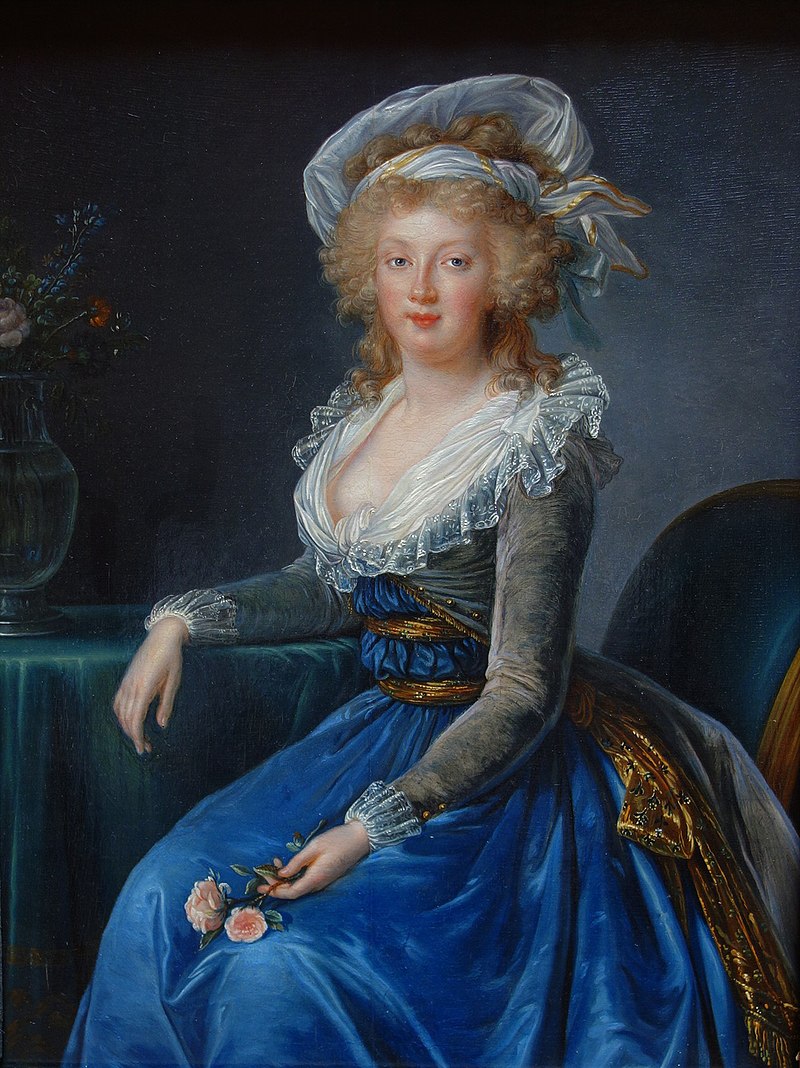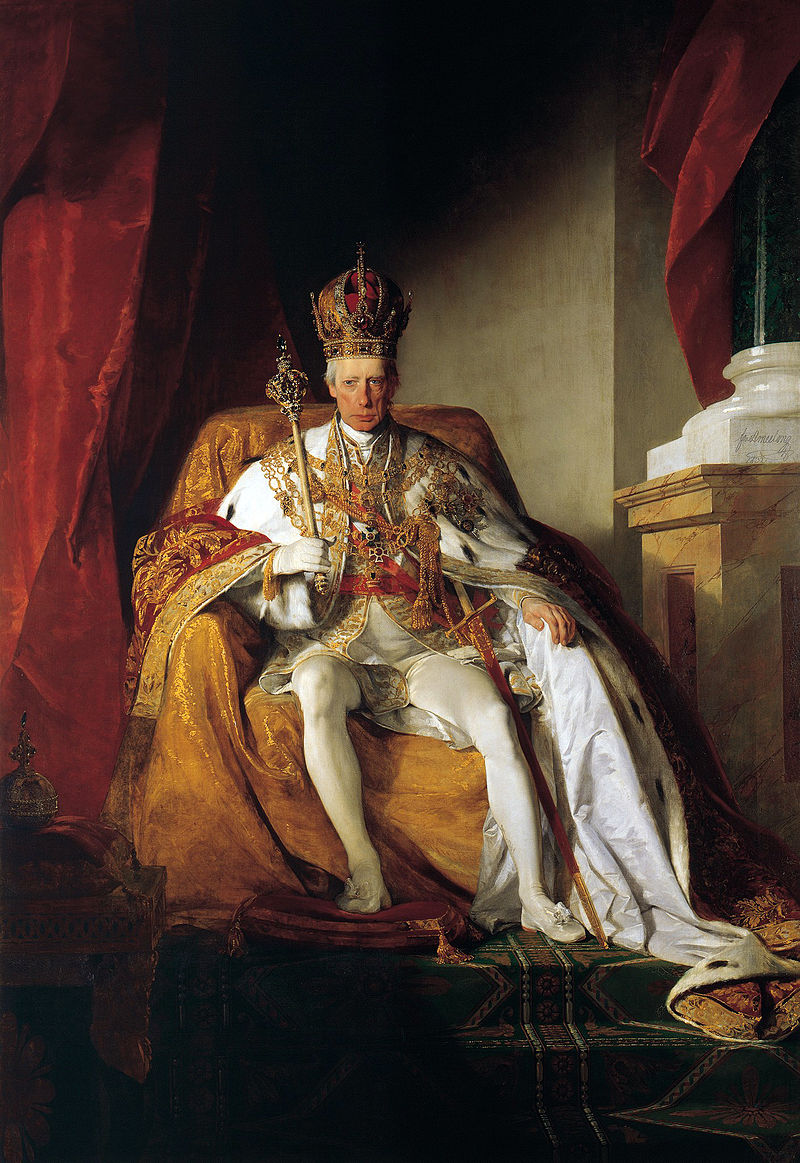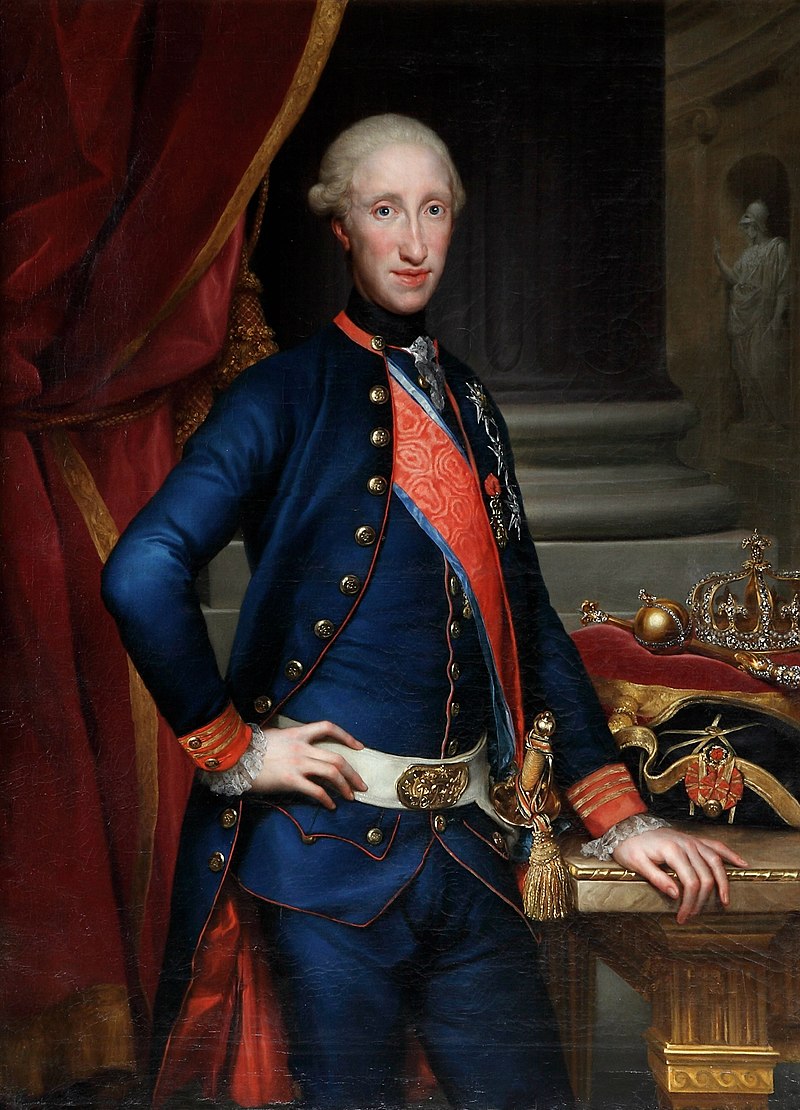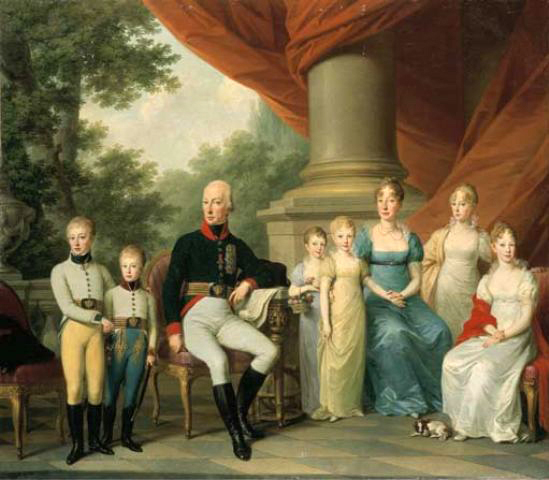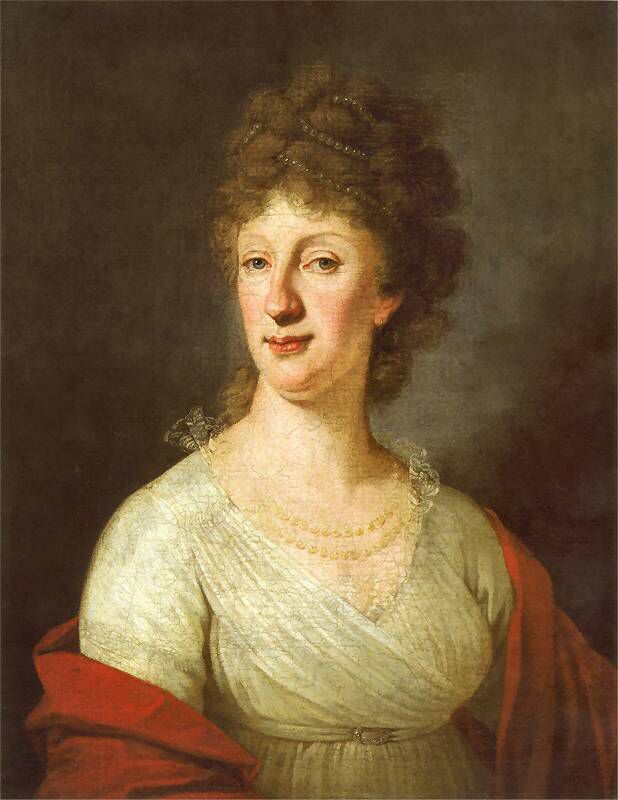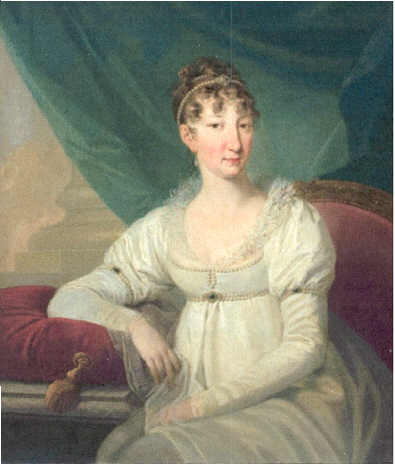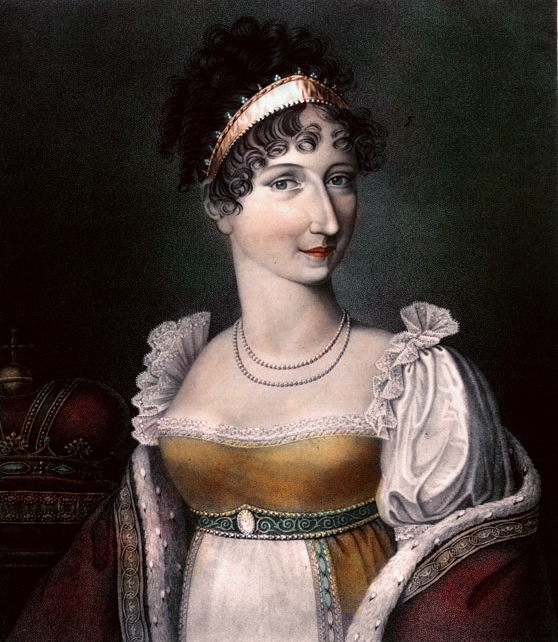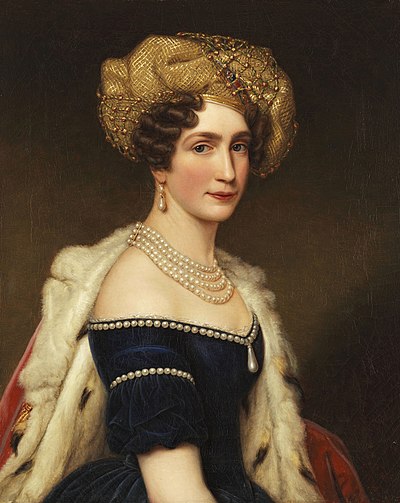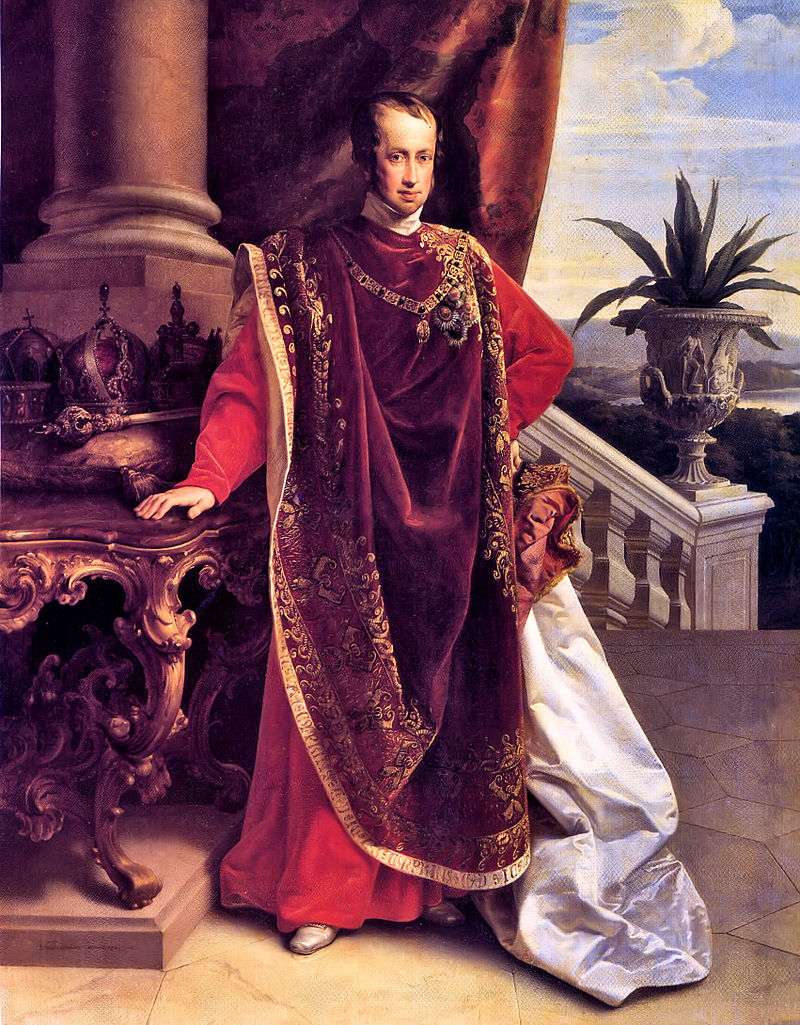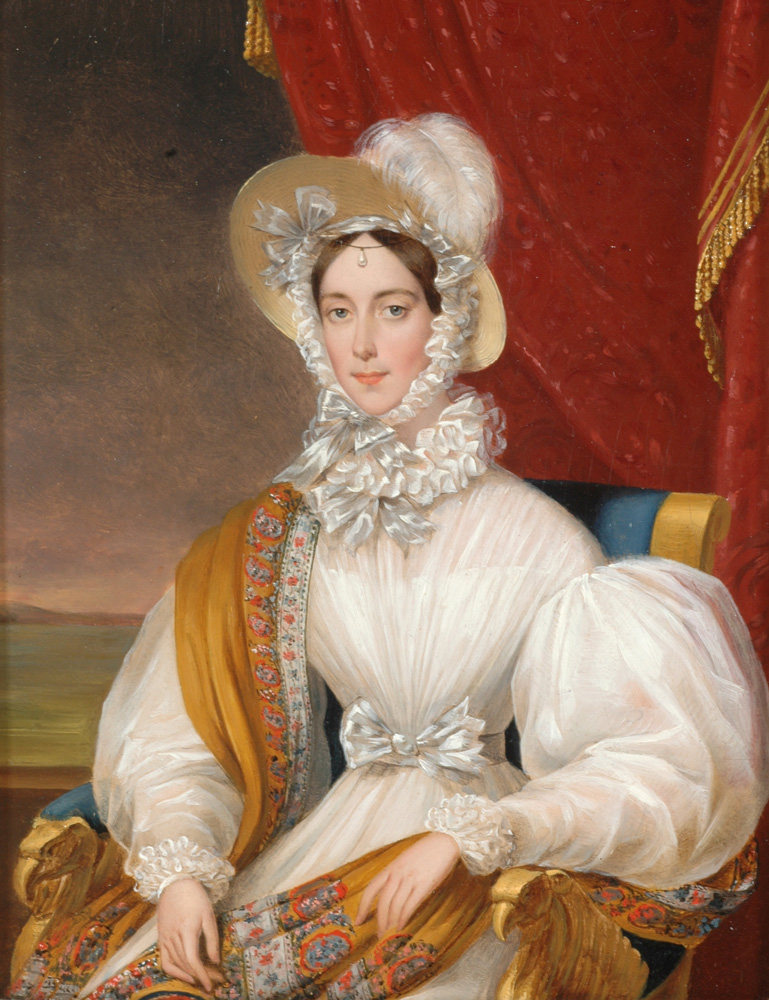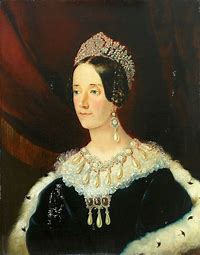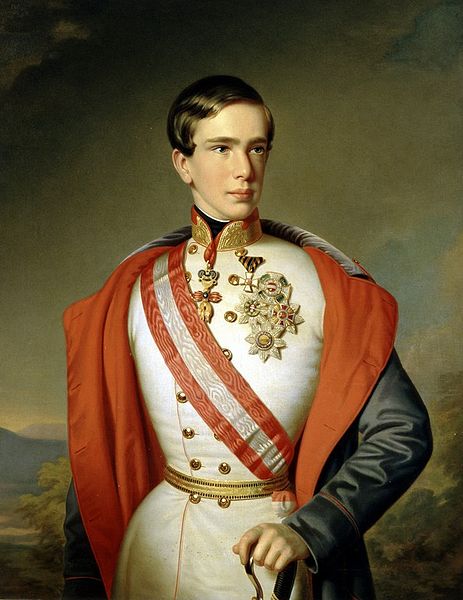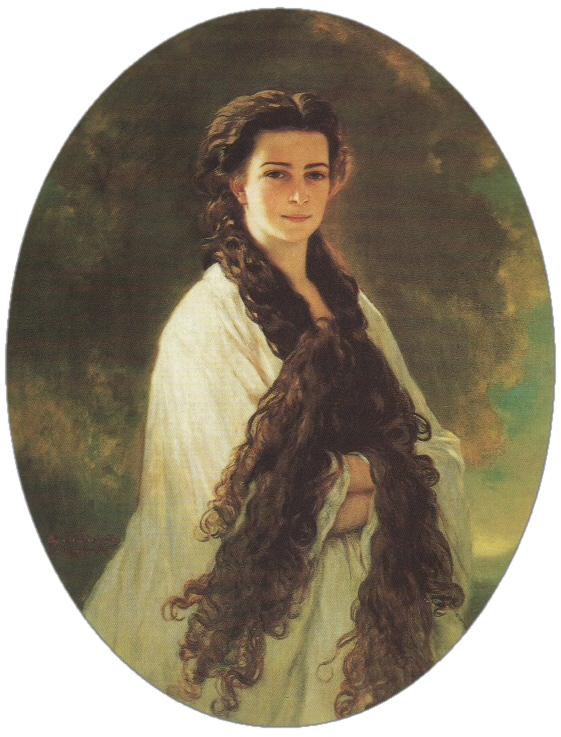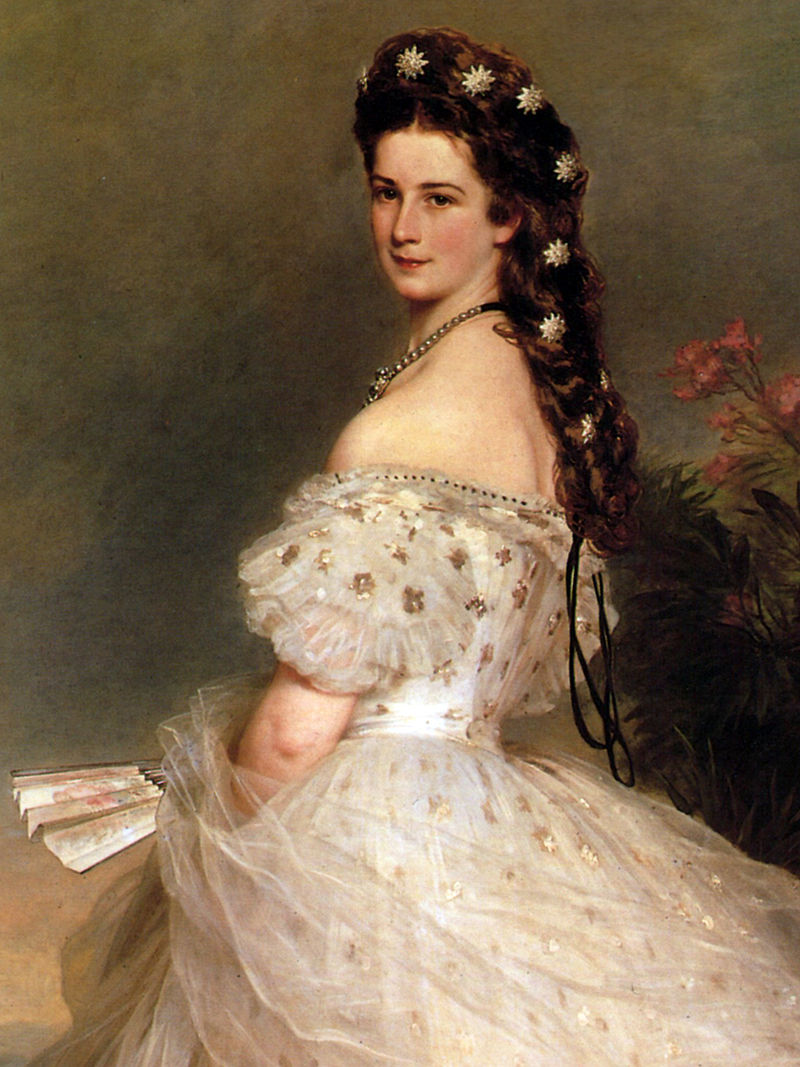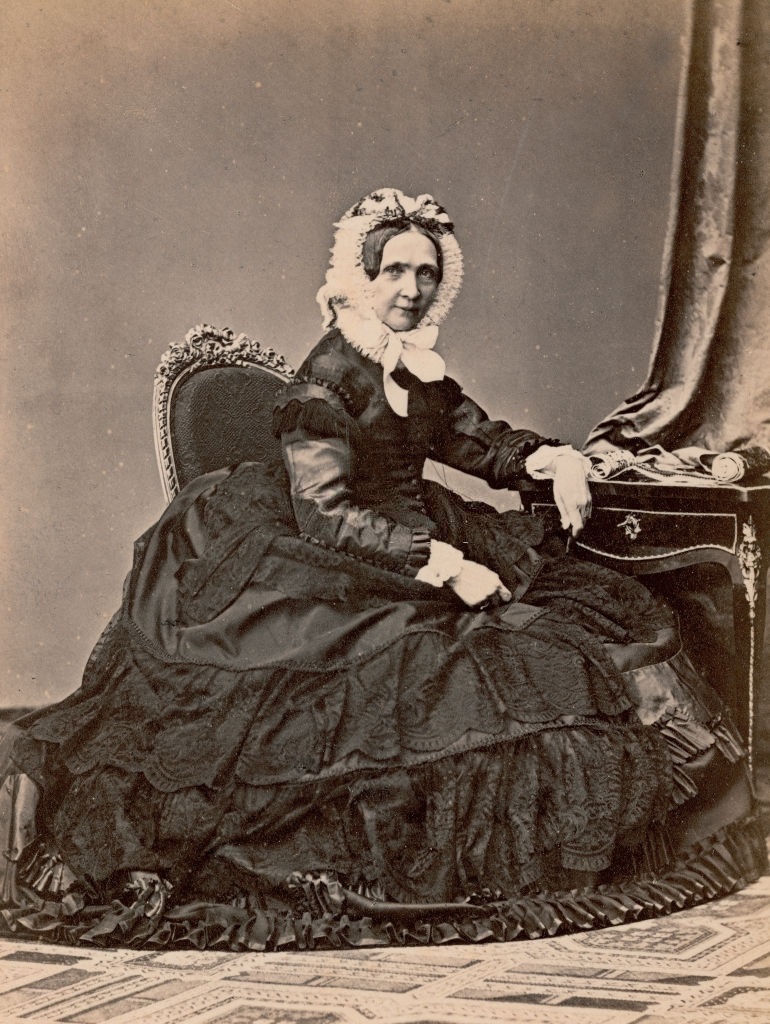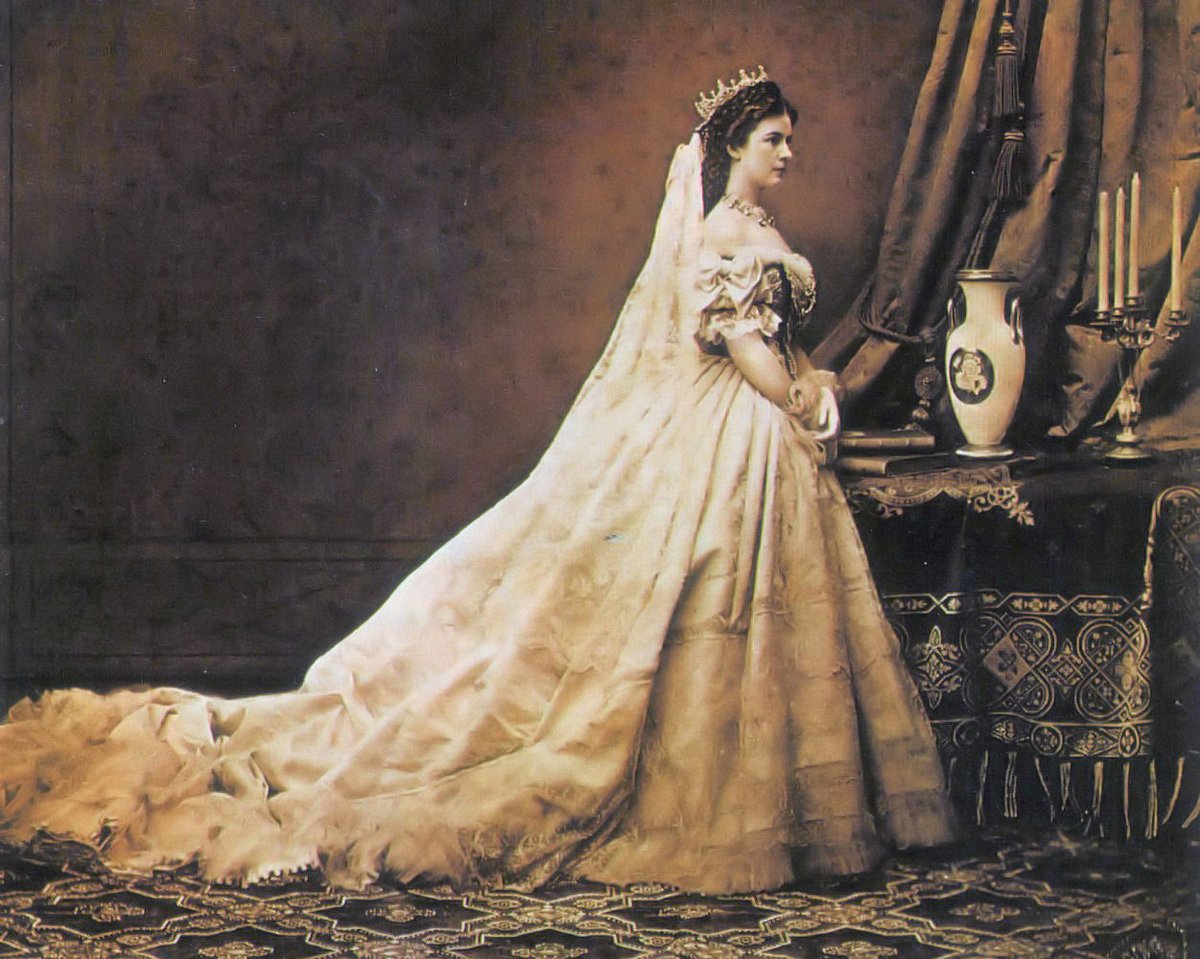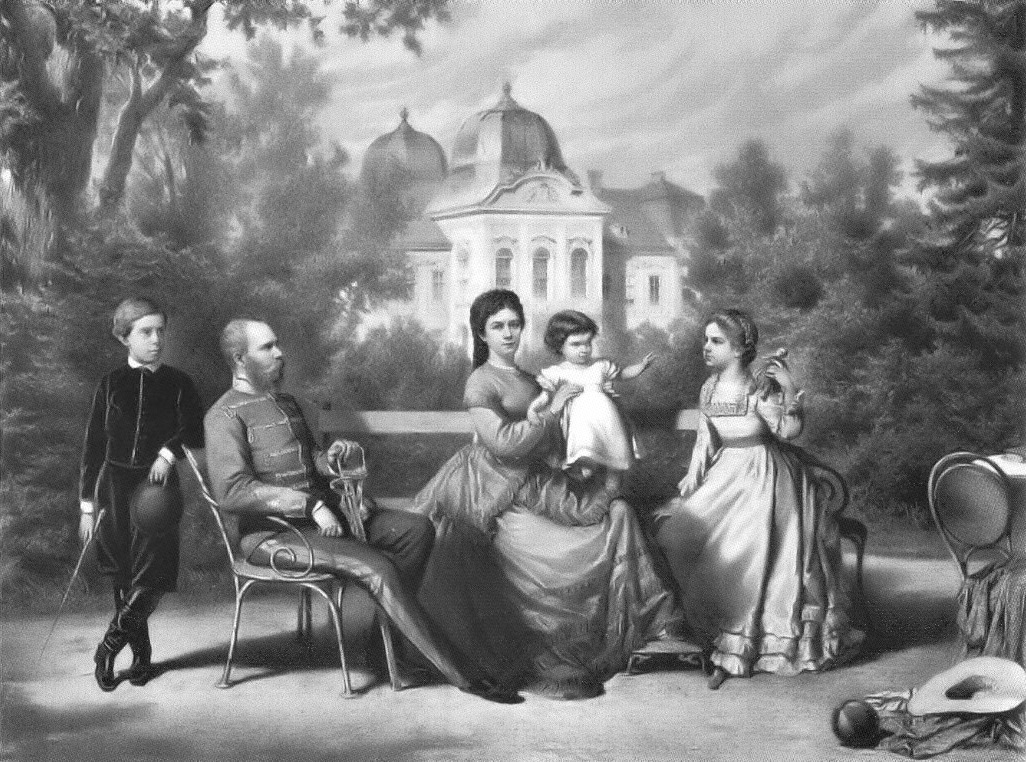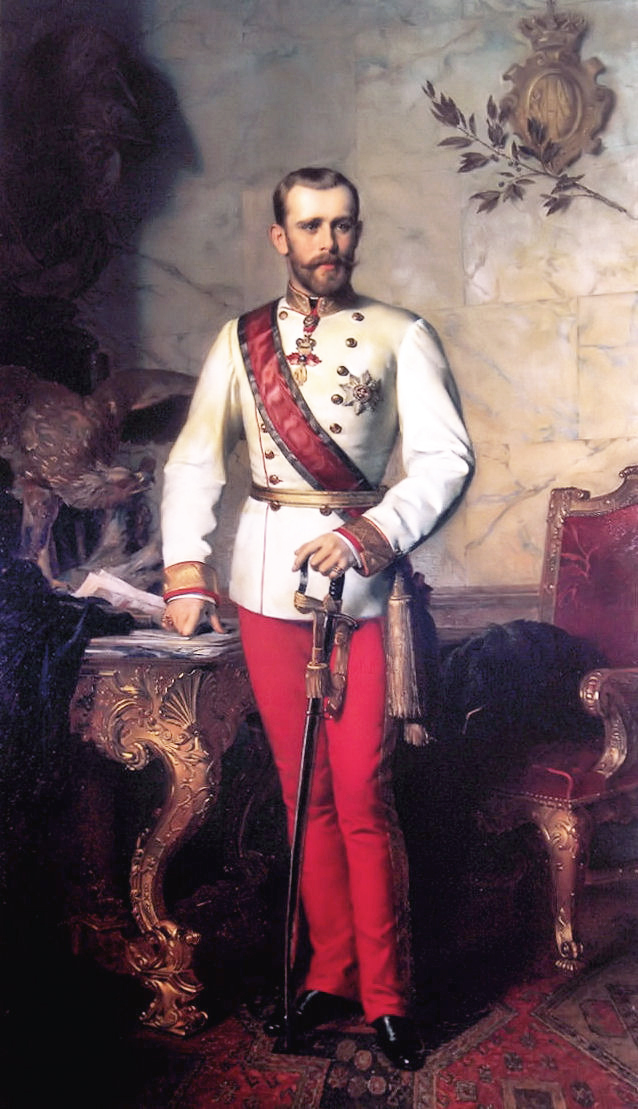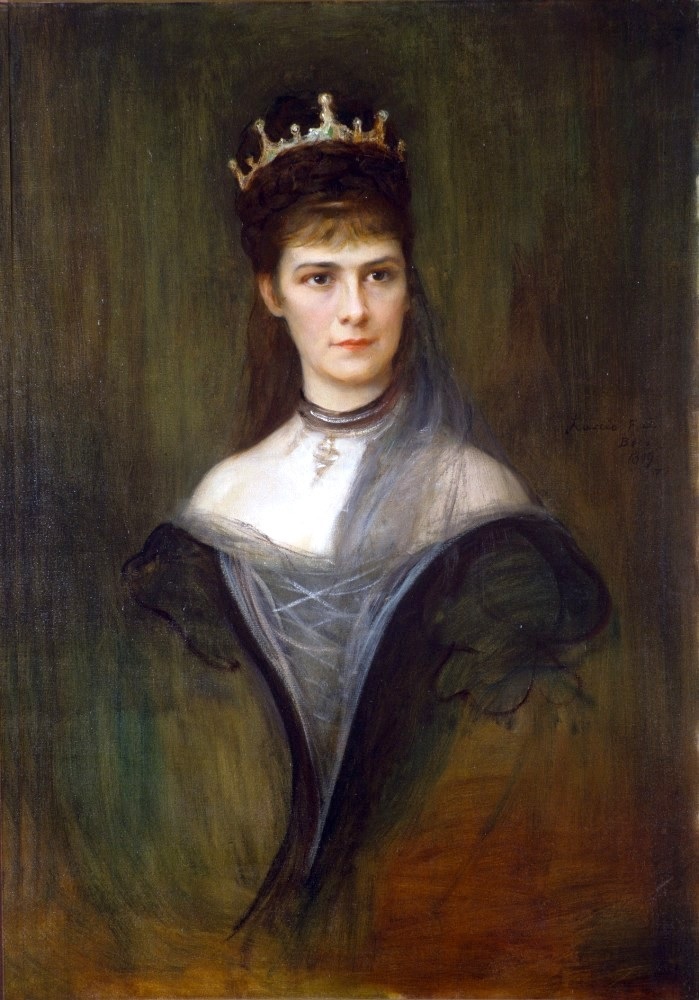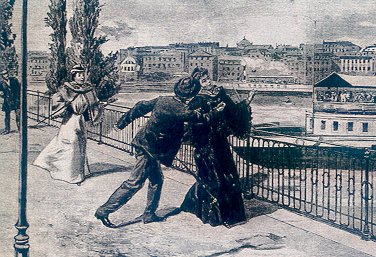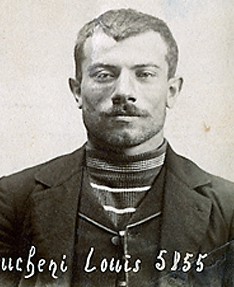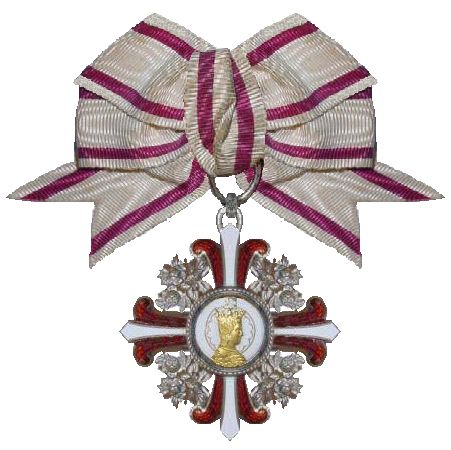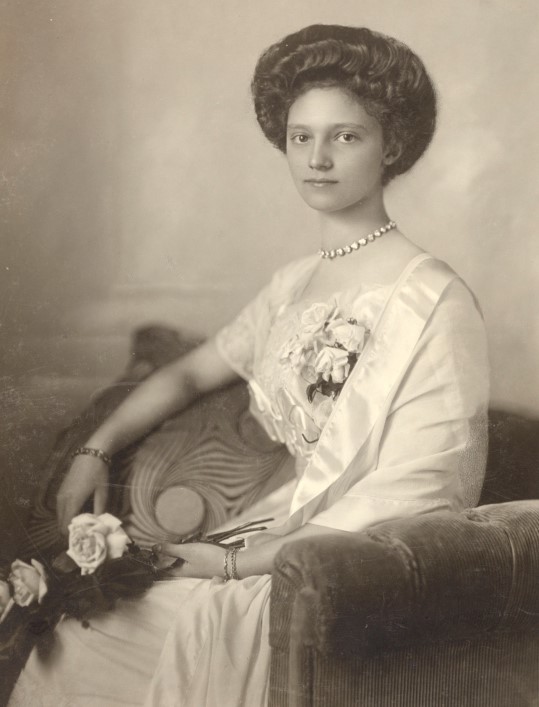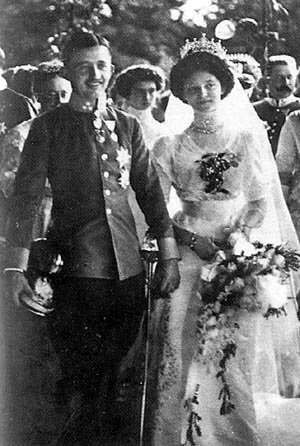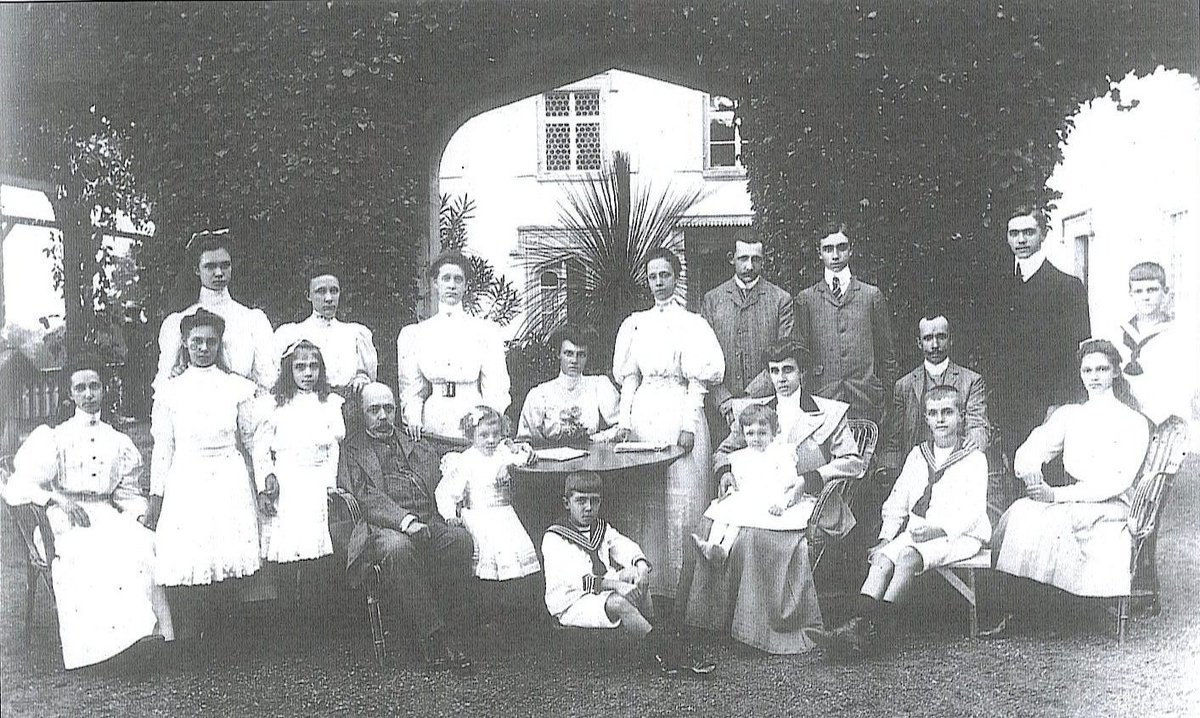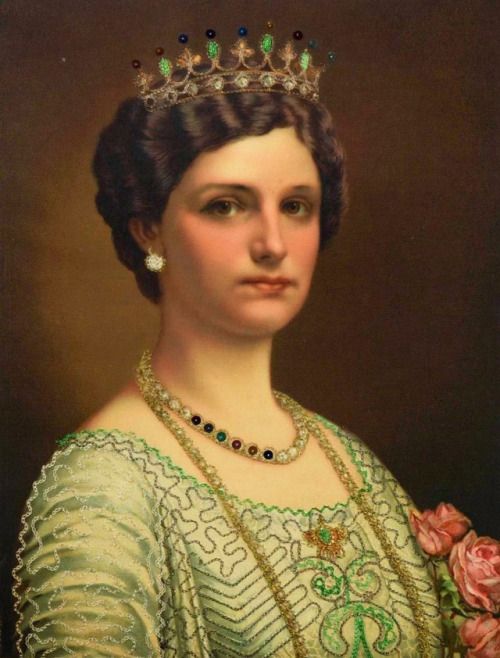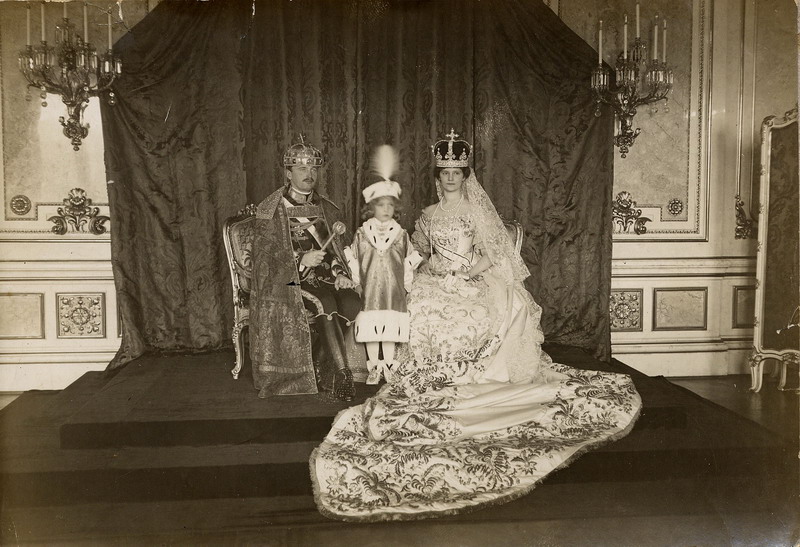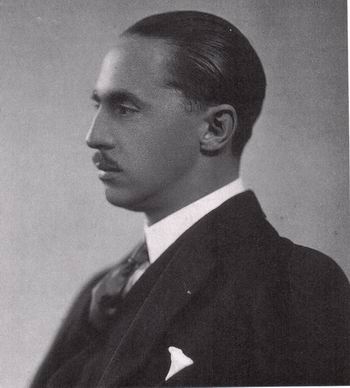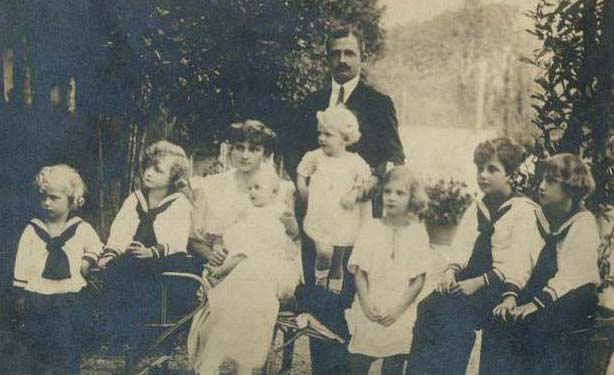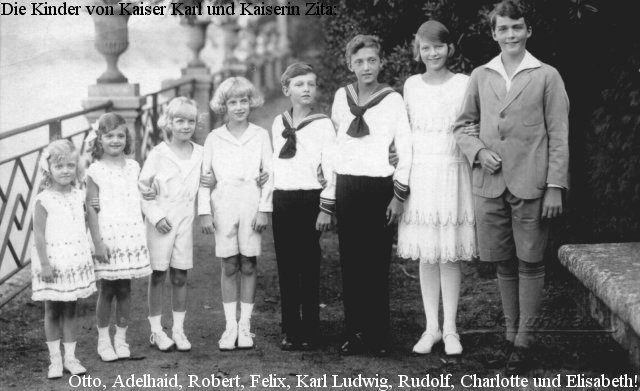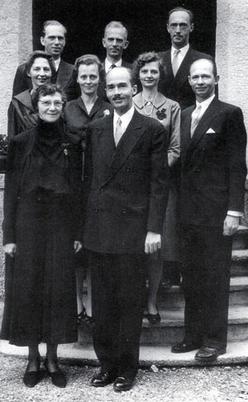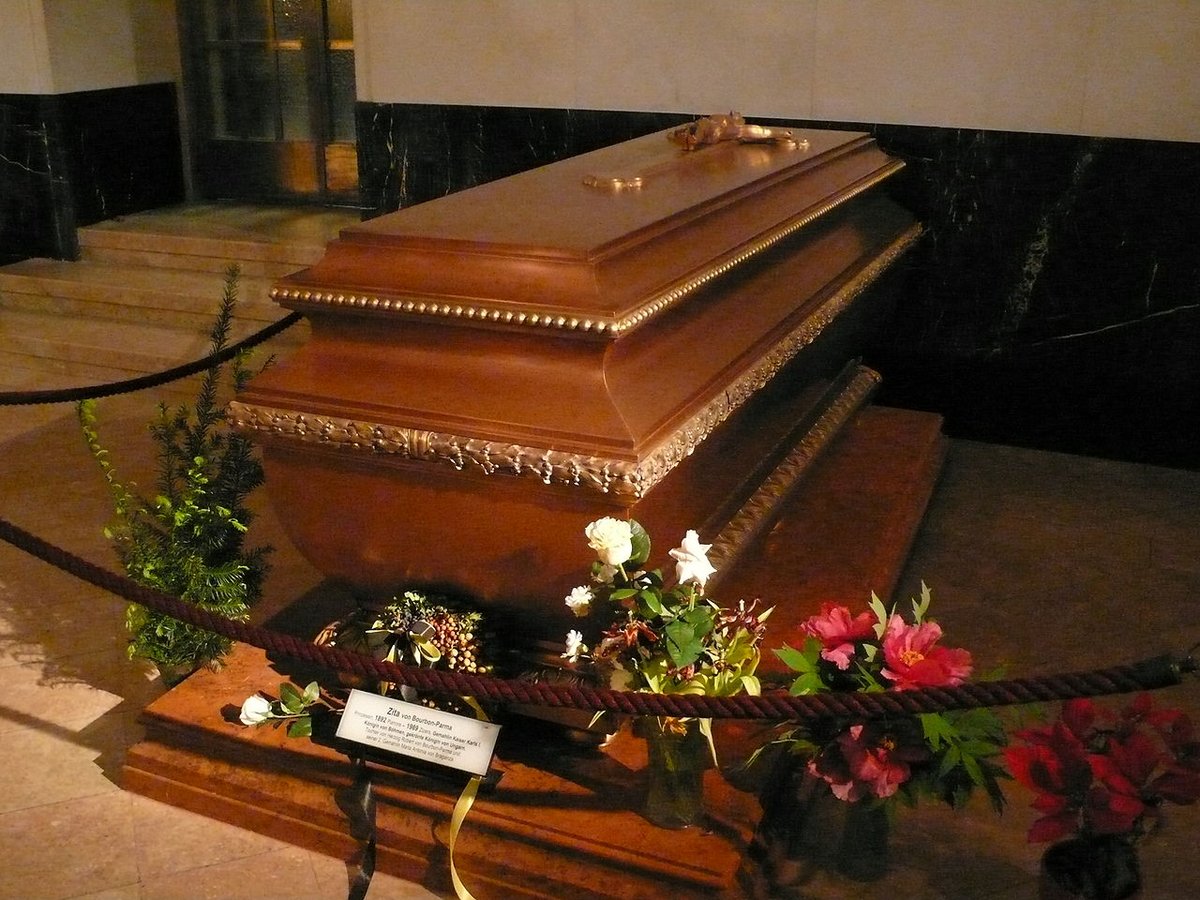Maria Theresa of Naples and Sicily (1772 – 1807) became the first Empress of Austria when her husband became the title of Emperor of Austria following the dissolution of the Holy Roman Empire in 1804. Franz II, Holy Roman Emperor became Franz I, Emperor of Austria on 11 Aug 1804.
She was named after her maternal grandmother Maria Theresa, Holy Roman Empress and was the eldest of 18 children born to Ferdinand IV & III, King of Naples and Sicily. She was the second wife of Franz I.
She would go on to have large family with 12 children, including Marie Louise, Empress of the French, Ferdinand I Emperor of Austria, Maria Leopoldina, Empress of Brazil and Queen of Portugal, and
Marie Caroline, Crown Princess of Saxony.
Marie Caroline, Crown Princess of Saxony.
Maria Theresa acted as an adviser to her husband and was the centre of anti-Napoleonic resistance at court. She was an important patron of Viennese music. Joseph Haydn wrote his Te Deum for chorus and orchestra at her request. She died during childbirth in 1807.
Maria Ludovika of Austria-Este (1787 – 1816)daughter of Archduke Ferdinand of Austria-Este succeeded Maria Theresa as Empress when she Married Emperor Franz I in 1808.
She was leader of the war party in Austria and opposed von Metternich foreign policy. She was a very popular Empress. She died childless in 1816 of TB while visiting her home in Verona following Napleon& #39;s defeat.
Caroline Augusta of Bavaria succeeded Maria Ludovika as Empress and fourth wife of Franz I of Austria in 1816. She had previously been married to William, Crown Prince of Württemberg. The marriage with Franz was a happy one to the end, albeit childless. She died in 1873.
Franz I was succeeded his son Ferdinand I as Emperor of Austria on 2 March 1835. He had previously been installed King Federdinand V of Hungary on 28 September 1830.
In 1831, he married Maria Anna of Savoy, daughter of King Victor Emmanuel I of Sardinia. On 2 March 1835, Maria Anna became Empress of Austria. On 12 September 1836 she was crowned as Queen of Bohemia at Prague, along with her husband who became the last King of Bohemia.
On account of her husband& #39;s incapacity, the couple remained childless. Maria Anna and Ferdinand had no children. She was a popular Empress and supported her husband& #39;s abdication in 1848. They lived the rest of their lives at Prague Castle and Scholss Reichstadt.
When Emperor Ferdinand abdicated in 1848, he was succeeded by 18 year old nephew Franz Josef as Emperor.
In 1854 he would marry Elisabeth Amalie Eugenie (1837-98), the third child and second daughter of Duke Maximilian Joseph in Bavaria and Princess Ludovika of Bavaria, the half-sister of King Ludwig I of Bavaria.
Popularly known as Sissi, the new Empress had a difficult time adjusting to the rigid and formal Habsburg court. She clashed often with her mother-in-law, Archduchess Sophie, who took over the rearing of Elisabeth& #39;s daughters.
Sissi (seen as Queen of Hungary) took an interest in Hungary and developed a kinship with Hungary. She facilitated the establishment of the the dual monarchy of Austria-Hungary in 1867, which ended Hungarian opposition to Habsburg rule.
Sissi would give birth to three children, three of whom would live to adulthood. Unfortunately her only son and heir 30 year-old Rudolf, Crown Prince of Austria died in a suicide pact with his 17 year-old minstress Mary Freiin von Vetsera in 1889.
Elisabeth never recovered from the loss of her son. She went into permanent mourning and withdrew from public life. She spent her time traveling outside Vienna, visiting exotic places such as Morocco, Algeria, Malta, Turkey, and Egypt.
In 1898, despite warnings of possible assassination attempts, the 60-year-old Elisabeth traveled incognito to Geneva, Switzerland, where she would be assassinated by the 25-year-old Italian anarchist Luigi Lucheni.
Franz Joseph was deeply shaken by the assassination, he himself having been a prior target. He would found the the Imperial Austrian Order of Elizabeth in her memory for general welfare in religious, charitable or philanthropic merit.
Zita of Bourbon-Parma (1892 – 1989) was the last Empress of Austria and Queen of Hungary, as consort of Emperor Karl I.
The 17th child of Roberto, Duke of Parma, and his second wife, Infanta Maria Antonia of Portugal, Zita married the then Archduke Karl of Austria in 1911, when he was not yet heir preseumptive.
Zita grew up as part of a large (below) family. Her father had 24 children by two wives. Zita and her siblings were raised to speak Italian, French, German, Spanish, Portuguese and English. She was quite well educated for her time, having spent time in boarding school.
The assassination of Archduke Franz Ferdinand thrust her husband into the limelight as heir presumptive in June 1914. The ensuing war was personally difficult for Zita, as several of her brothers fought on opposing sides in the conflict.
When Franz Joszef died in November 1916, Karl succeeded him as Emperor. The couple were crowned on 30 December 1916. Her husband became Karl I of Austria and Karl IV of Hungary. (Seen here with son Otto in full Hungarian regalia)
In the spring of 1917, Zita attempted abortively to use her brother Prince Sixtus, a serving officer in the Belgian Army, to arrive at a separate peace between Austria-Hungary and France. The plan floundered over French and German intransigence leaving the Emperor embarassed.
The proclamation of the Republic of German-Austria on 11 November effectively ended the Habsburg monarchy. With support from King George V, the family were moved into exile first to Switzerland and then Madeira.

 Read on Twitter
Read on Twitter